State and federal governments are locked in talks over which disability services will be covered by the NDIS and which won’t. Meanwhile, disabled kids and their parents are caught in the middle.
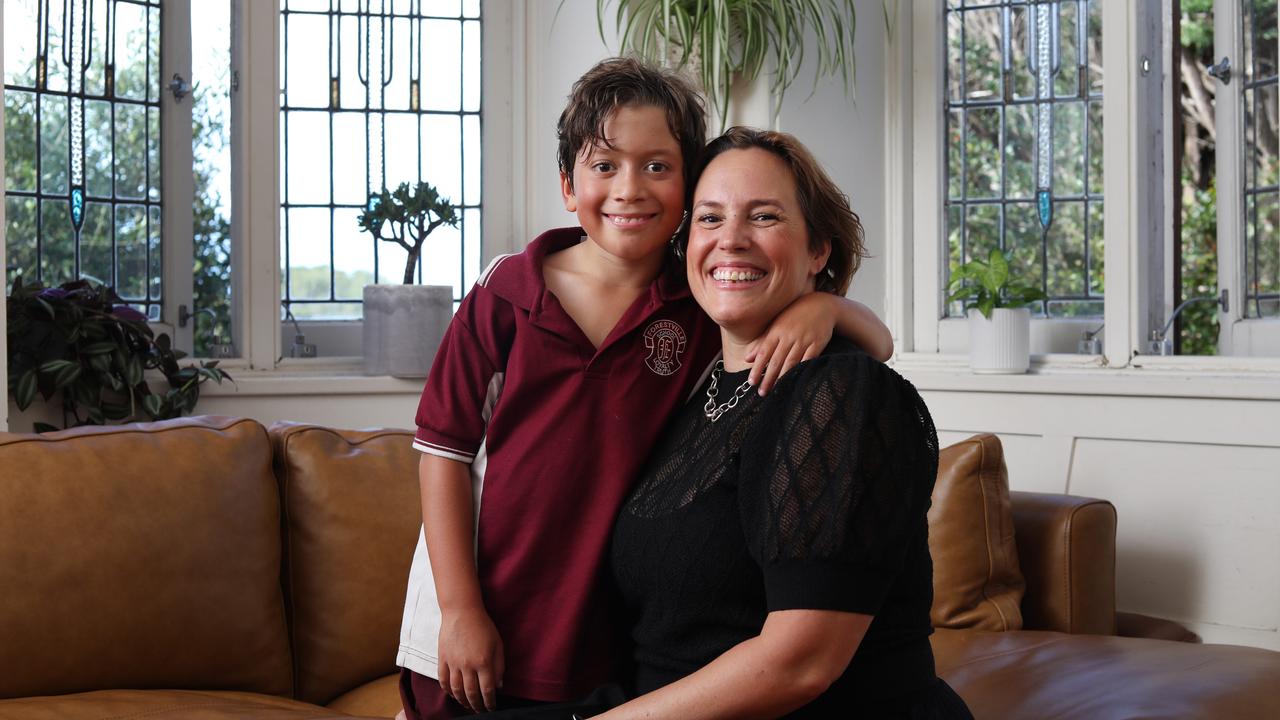
Michele Warbrooke with her nine-year-old son, Ari, who has autism and is an NDIS participant. Michele is worried about an upcoming review and what services Ari could receive outside the NDIS. Picture: Jane Dempster/The Australian
Children with autism are being “left in limbo” as the NDIS tightens the screws on eligibility and what services it funds before the states have built disability programs for them outside the scheme, autism advocates and experts warn.
And despite months of state-federal negotiation it is still unclear what these new “foundational supports” will cover beyond the $46bn National Disability Insurance Scheme, they say.
Autism Awareness Australia chief executive Nicole Rogerson said many families of kids with autism or developmental delay are reporting either losing their NDIS packages or having services reduced, with no clarity about if and how their child will be supported through state programs into the future.
“It’s without doubt that families are being left in limbo, caught between the NDIS reforms having started, with the effect that hundreds of children a week are being assessed as no longer eligible, and the system to replace it, to be run by the states, is not up and running or even close to being up and running,” Ms Rogerson said.
“If a kid is deemed no longer eligible for the NDIS, that’s a big decision, because it means they either no longer need support or they will get support elsewhere. But the new system is not ready.
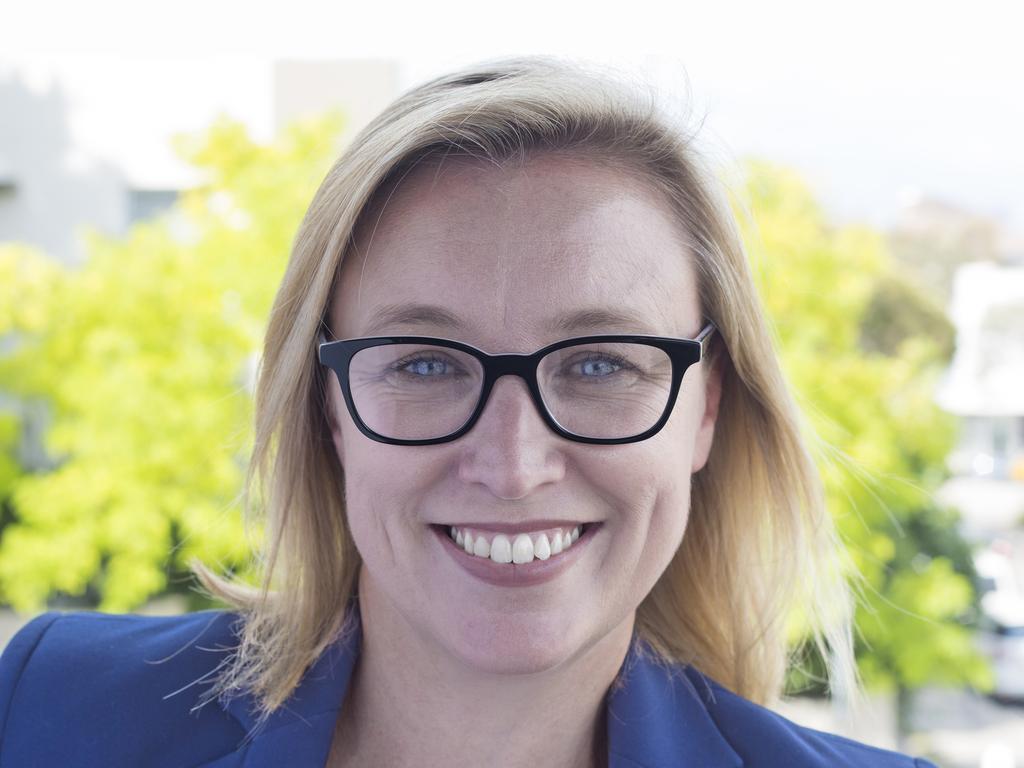
Autism Awareness Australia chief executive Nicole Rogerson. Picture: supplied
“(Former NDIS minister) Bill Shorten used to say the NDIS can’t be the only lifeboat in the ocean. That is fine, but they didn’t build any other lifeboats, so now there’s nowhere for these kids to go,” she said.
Clinical psychologist and autism researcher Adam Guastella said there was “no question that families are getting the message when seeking (NDIS) funding to expect cuts to their packages, and that’s the current expectation”.
“I think that families have a lot of anxiety about what the future may hold. They are afraid about how they will get the right supports for their children. At the moment they are floundering with the uncertainty,” Professor Guastella said.
But NDIS Minister Amanda Rishworth said the rules around who can access the NDIS are no different than previously.
“The purpose of the NDIS has not changed, and the NDIS will continue to provide participants with disability-related supports,” Ms Rishworth said.
“There have … been no changes to eligibility criteria, including for children with autism.
“Any Australian living with disability who meets the eligibility criteria will receive support through either the Early Intervention pathway or by becoming a participant in the scheme,” Ms Rishworth said.
Ms Rogerson pointed to evidence from the National Disability Insurance Agency to Senate estimates in November that the agency had ramped up eligibility reassessments to 1200 a week, 80 per cent of them being children aged 5-9. Just under 50 per cent had their NDIS access revoked.
But the government points to NDIS data showing payments to participants with autism rose by more than $1.3bn throughout 2024 to $8.86bn. It also notes average payments to these participants increased by 5 per cent from the previous year. And the total number of children with autism on the scheme, currently just under 200,000, is rising.
Sydney mother Michele Warbrooke remains anxious. Her second son Ari, aged 9, has multiple diagnoses – ADHD mild intellectual disability, and is in the assessment process for autism. Ari has been on the NDIS since age 5, receiving support for speech and occupational therapy, psychology and some behavioural therapy.
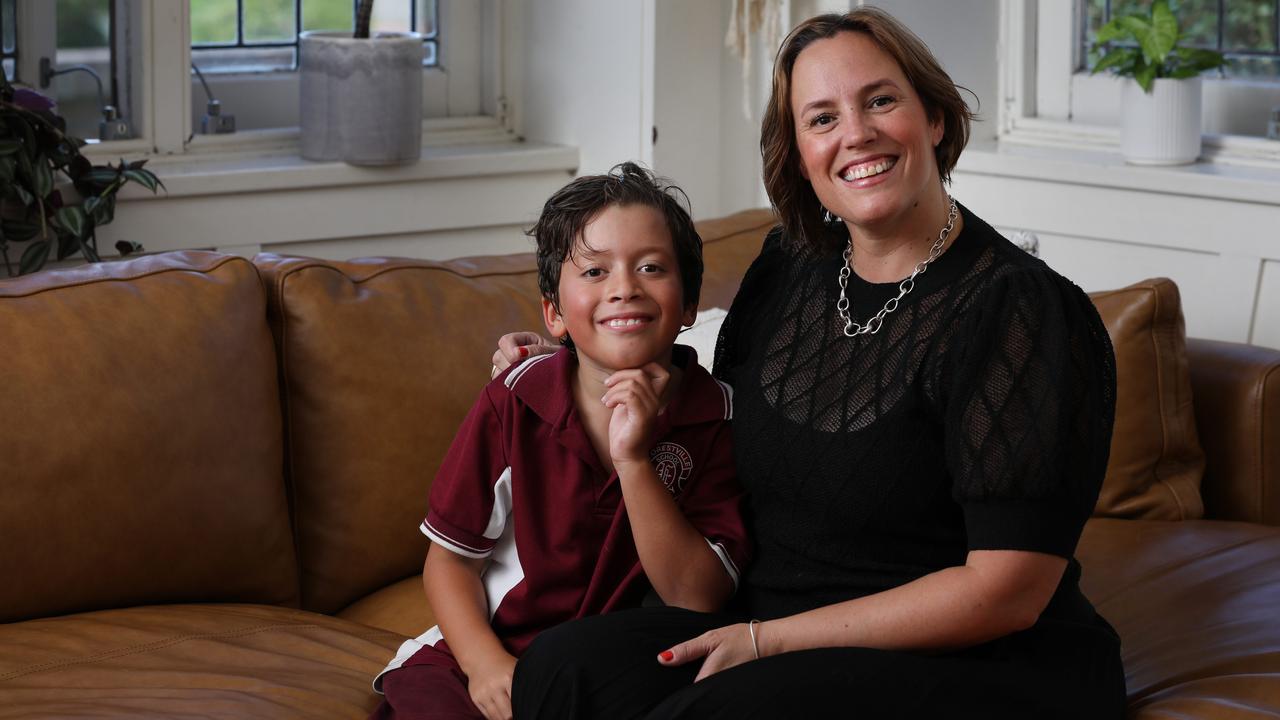
Michele says Ari is the life of the party and keeps the family on their toes. Picture: Jane Dempster/The Australian
Asked to describe Ari, Ms Warbrooke said he’s “outgoing, a ball of energy”.
“His ADHD makes him the life of the party, but he’s also impulsive, and he definitely keeps us on our toes. We wouldn’t change him in any way, but it’s never easy,” she said.
“School is hard. He doesn’t do what other nine-year-olds do. At the moment he’s far behind where he should be for a year 3 boy.”
In fact they had to take him out of his first primary school just down the road, concerned about the lack of support and issues with other parents. Ari attends a primary school more than 30 minutes’ drive away, another complicating part of the daily family juggle.
Ari’s next review of his NDIS package is in September, and Ms Warbrooke said it was playing on her mind.
“The services he’s been getting under the NDIS have been amazing, so beneficial for him, but there’s no way we could afford to pay for it ourselves,” she said.
“I’m certainly worried about the next review. Because he’s nine now I’m worried about it being completely cut.”
The NDIS, a world-first public disability insurance scheme, started operating in 2013 to provide reasonable and necessary support for people with a significant and permanent disability.
As it rolled out across the country over the following years more people than originally anticipated were deemed eligible. There are now more than 700,000 NDIS participants, more than half aged under 18. Among five to seven-year-old boys in Australia, 13 per cent are NDIS participants.
The commonwealth and states jointly fund the scheme, with the commonwealth picking up a larger share of the cost, now about 70 per cent.
Rapid cost growth since its inception saw the NDIS quickly become one of the federal government’s largest payment programs. Without reform, the projected cost of the NDIS was $100bn a year by 2033, threatening to swamp the budget.
In December 2023, national cabinet intervened, setting a cost growth target of 8 per cent by mid-2026 for the NDIS, considerably lower than previous years’ growth, which had ranged from 14 per cent to 22 per cent.
A 2023 independent review into the sustainability of the NDIS ordered by Mr Shorten proposed fundamental changes, including that the scheme be returned to its intent of providing support for those with the most profound disabilities.
Other people with disabilities should receive “foundational supports” delivered in community settings. For some children, this could be in schools, early learning facilities or other community settings.
While this would help the NDIS in terms of its overall bill, how the new arrangements are to be paid for has become a political problem. A funding arrangement struck at that December 2023 national cabinet meeting, part of a wider state-federal deal, puts much of the cost of these supports in the states’ hands.
So far, and after months of negotiation, there is no agreement on what these foundational supports will include, leaving the federal government falling behind on its disability reform program.
“The sticking point is how much the states are taking on in terms of foundational supports, and concerns about cost shifting,” Grattan Institute disability program director Sam Bennett said.
“The main areas of contention appear to be how much funding the state’s health and education systems will need.

Sam Bennett, director of the Grattan Institute’s disability program. Picture: supplied
“This is now tied up in the state-federal hospital funding round, with increased hospital funding seemingly contingent on states finding money to fund foundational supports.
“But the bottom line is that 14 months on from this process starting, we’re still not sure what foundational supports actually are, let alone when they will materialise.”
Ms Rogerson said she had spoken to every state and territory disability minister during the past few months, and believed they were only now coming to terms with what was being asked of them.
“The states agreed to take on these foundational supports, but I don’t think they had any idea what they were signing up to,” she said.
“When families stop getting support through the NDIS the pressure will start landing on the schools’ front door. The state disability and education ministers are only now starting to recognise the size of the issue that now confronts them.”
There is still an expectation within the federal government that not only will the ambit of foundational supports be agreed, but they will start rolling out in 2025-26.
“I’m working hard with states and territories on the design of foundational supports, which is different across jurisdictions, and we have been consulting with the community on what’s needed,” Ms Rishworth said.
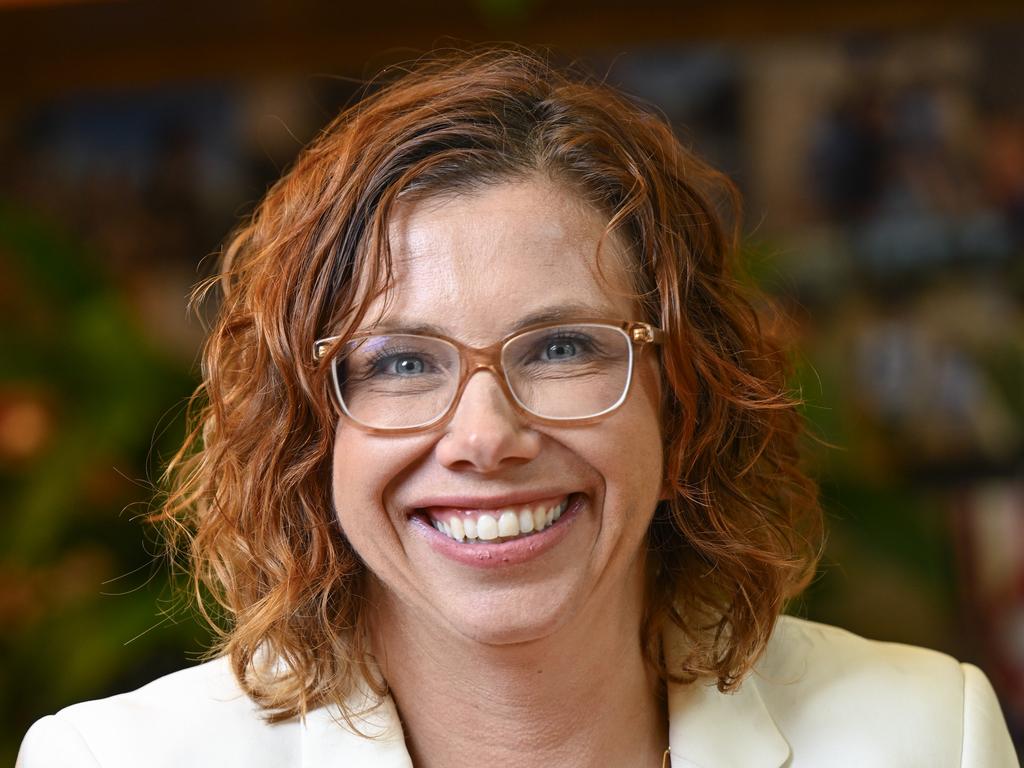
NDIS Minister Amanda Rishworth. Picture: Martin Ollman/NewsWire
Ms Rishworth has confirmed the NDIS cost growth trajectory has been reined in during the past year, with Tuesday’s budget to show it is tracking to cost about $700m less than the $46.4bn forecast for this financial year.
More clarity about what supports and services can be included in plans, along with a crackdown on fraud and exploitation of participants, was behind the savings, she said.
Ms Rogerson said families with disabled kids don’t care where the support comes from, state or federal, provided their children are given the best chance to thrive.
“No parent says ‘hooray, lucky me, my child is on the NDIS’. Life is complex for these families, and governments should make it easier,” Ms Rogerson said.
Professor Guastella agrees: “It’s a complex issue to solve who funds what, whether it be state or federal, but it’s not for families to manage this transition, it’s for both levels of government,” he said.
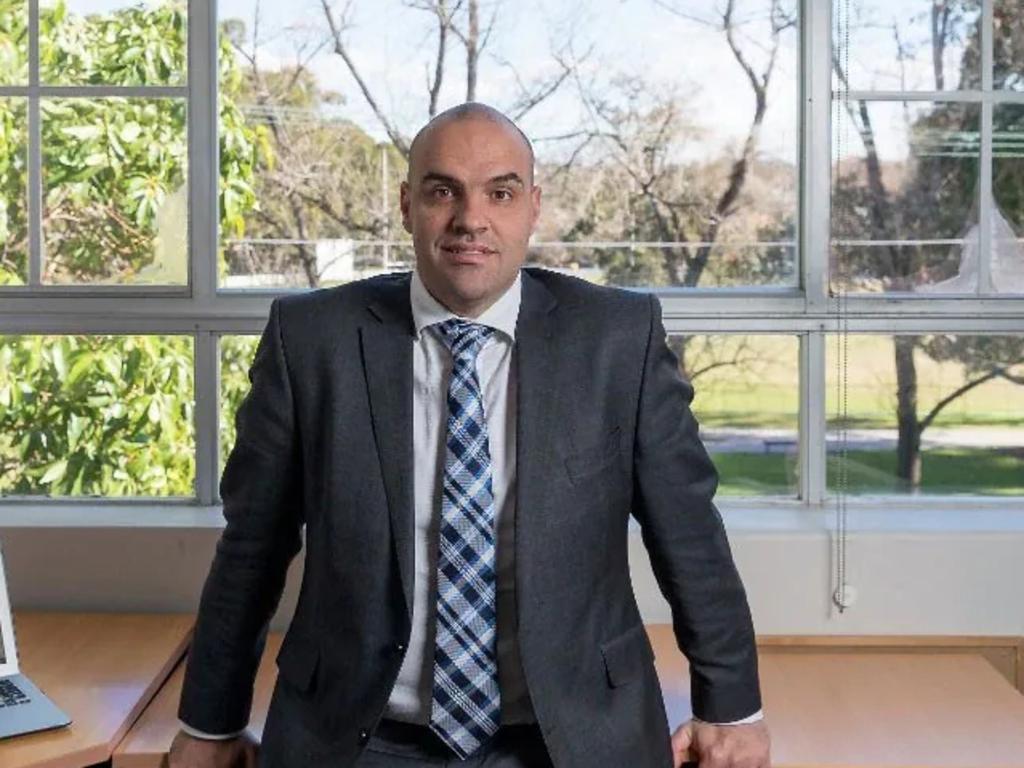
Clinical psychologist and autism researcher Adam Guastella. Picture: supplied
Ms Warbrooke said if Ari received the support he needed, she did not care which level of government was providing it, and that he could maintain relationships with the service providers that he had become used to.
“But I don’t feel confident that the states and federal governments speak to each other properly, and this issue is another one,” she said.
“I’m not clear on exactly what foundational supports are. I understand there will be more in the school system, which is not accessible under the NDIS anyway, but what that actually means I don’t know.”